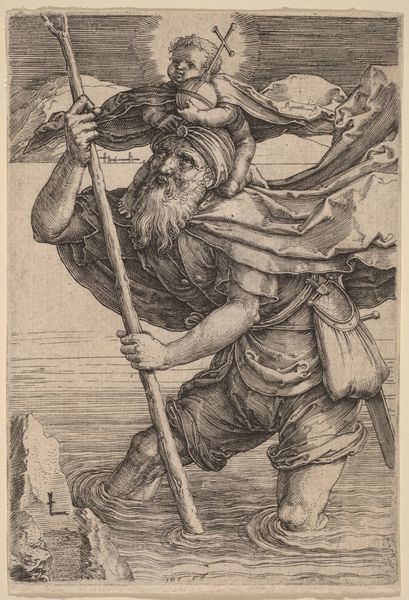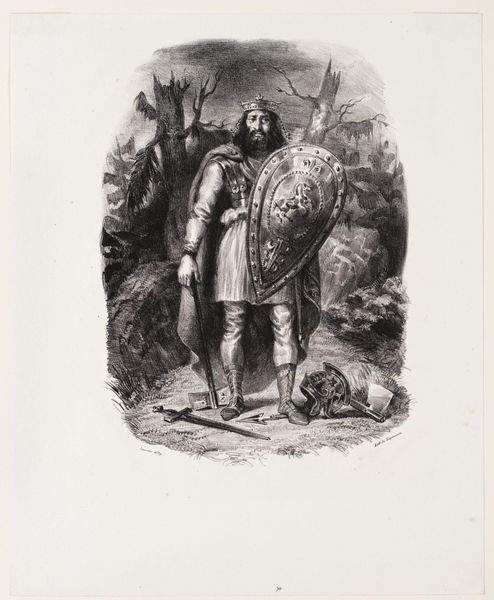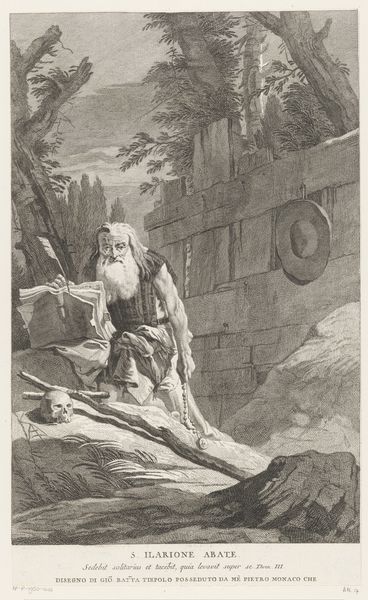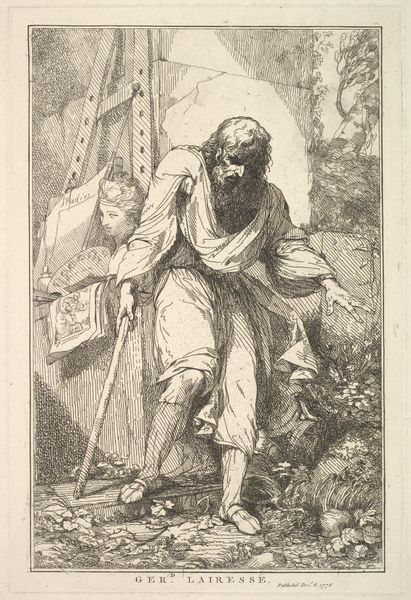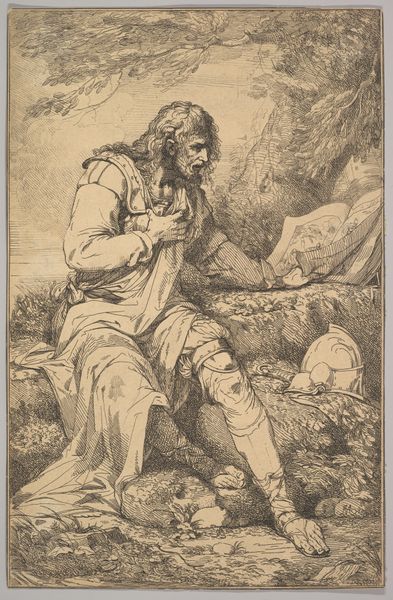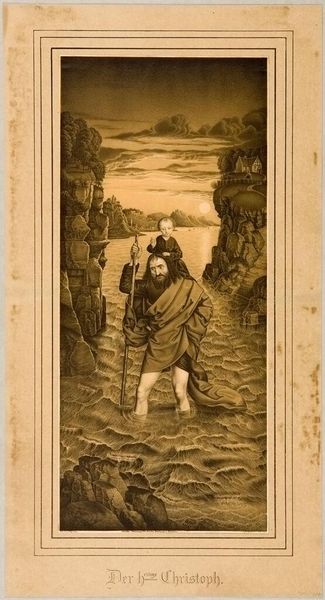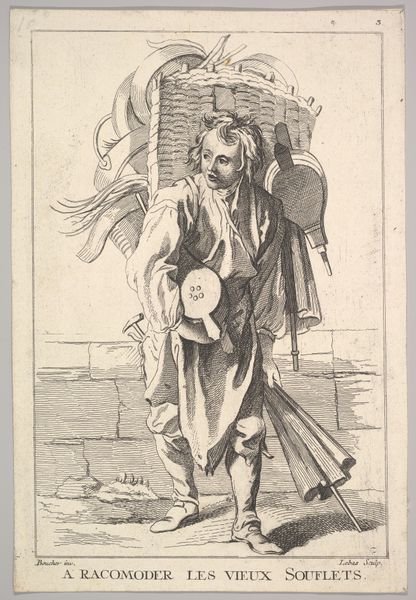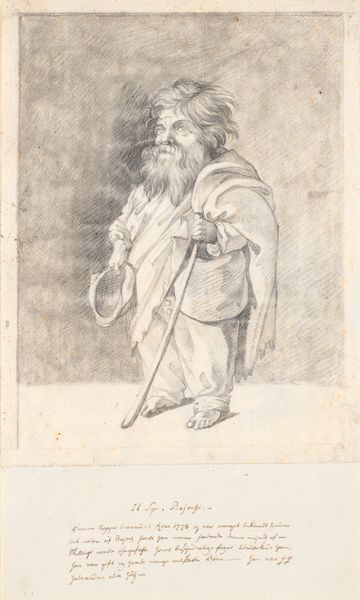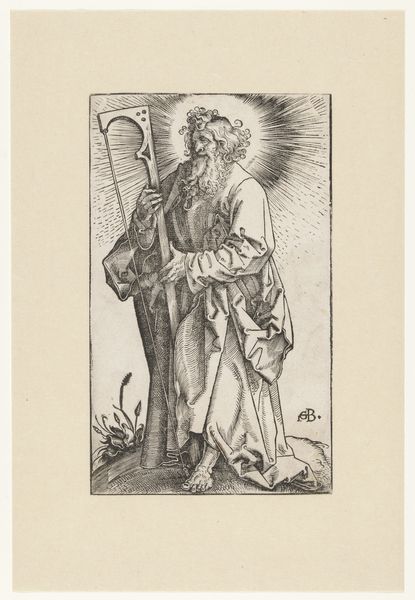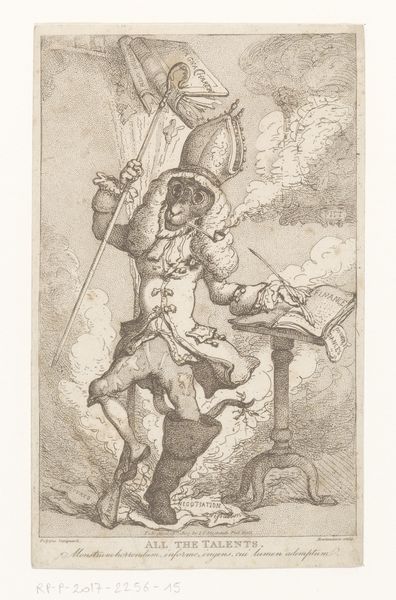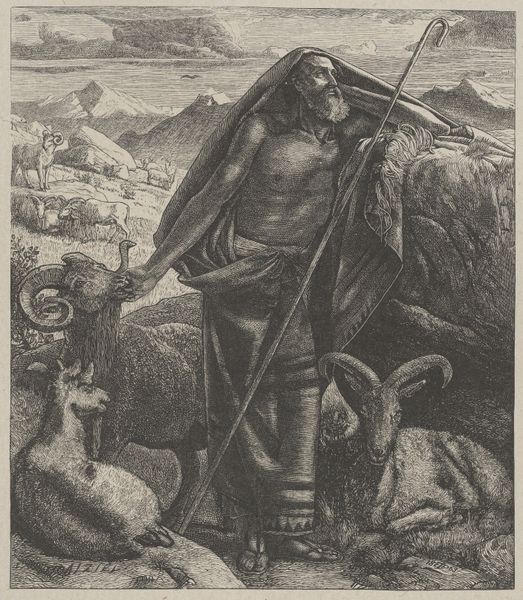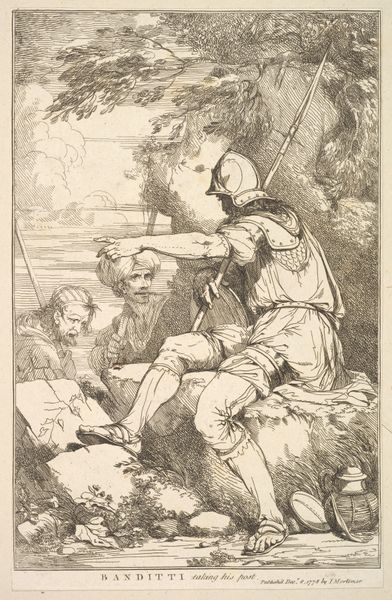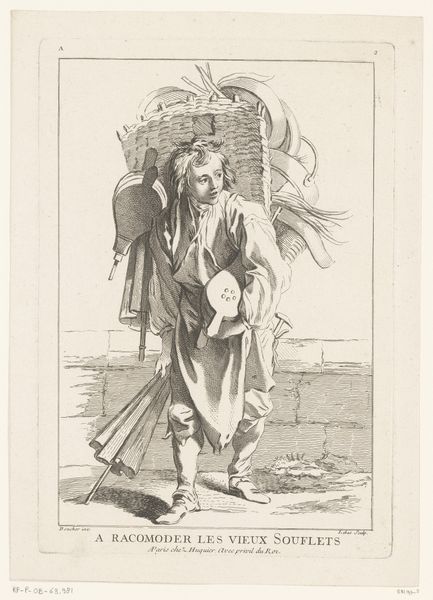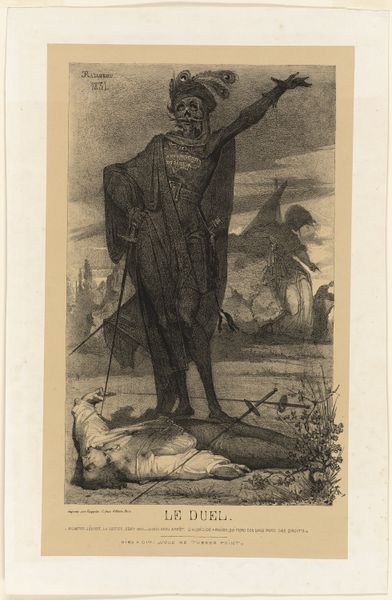
Heilige Christoffel steekt met het Christuskind op zijn schouders een rivier over 1824
0:00
0:00
drawing, pencil, pen
#
pencil drawn
#
drawing
#
medieval
#
pencil sketch
#
old engraving style
#
landscape
#
river
#
figuration
#
pencil drawing
#
pen-ink sketch
#
pencil
#
pen
#
pencil work
#
realism
Dimensions: height 610 mm, width 270 mm
Copyright: Rijks Museum: Open Domain
Curator: What strikes you first about this pencil drawing, entitled "Heilige Christoffel steekt met het Christuskind op zijn schouders een rivier over," made in 1824 by Johann Nepomuk Strixner? Editor: Immediately, I’m drawn to the way the waves seem to be swallowing up Saint Christopher's legs; there’s an eerie sense of labor visualized, as if the current's resisting him, slowing him. Curator: Absolutely. It speaks volumes about the grueling, physical, arguably low-wage labor that has surrounded image production historically. Even religious iconography wasn't divorced from worldly craft practices. Notice Strixner’s deliberate rendering of each ripple, the individual strokes forming a collective force resisting Saint Christopher's passage. Editor: I also see a clear demonstration of art and religious devotion coexisting and shaped by societal values. Saint Christopher himself is a figure deeply rooted in medieval lore. Considering the context of 1824, a period marked by the resurgence of religious art and Romanticism, how do you view its public reception? Curator: One imagines the art-consuming public understood such imagery, and its symbolic language around service. Strixner’s choice of pencil and pen themselves speaks volumes; relatively accessible, ubiquitous, they suggest perhaps a conscious choice to avoid precious materials, to connect to a broader, less elite audience. The availability of the material impacts the distribution of the message, wouldn’t you agree? Editor: It does, but it is important to recognize how the Church was often deeply involved in art production and patronage. I believe that influences everything: who got to see it, how, and where. I believe they found ways to reach broader audiences. This narrative resonates, as it reflects ideas of faith and duty deeply entrenched in early 19th-century society. How do you see the artist negotiating both traditional religious subjects and new avenues to communicate with this evolving audience through accessible methods? Curator: He straddles that line carefully. While adopting widespread tools—pen and paper—the artist infuses detail typically reserved for precious works, adding weight to the humble labor embedded into the creation of devotion. The act itself reflects the spirit of Saint Christopher and devotion to work. Editor: I see the artist grappling with both historical styles and new technologies and modes of disseminating information to shape cultural consciousness through images that both edify and educate. Thank you for this interpretation; this image reminds us that history exists even within seemingly straightforward materials and methods. Curator: Thank you, looking at this image through the lens of materiality definitely highlights connections between labor, production, and the spread of artistic narratives.
Comments
No comments
Be the first to comment and join the conversation on the ultimate creative platform.
